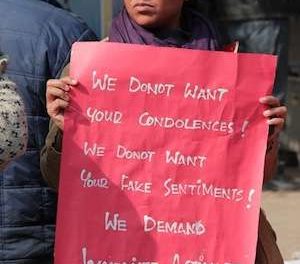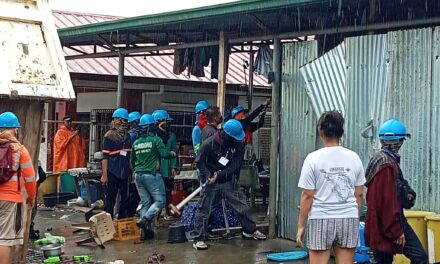By Walden Bello*
A RECENT request for information on the record of Paul Wolfowitz, the incoming president of the World Bank, in the Philippines brought back memories of the last days of the Marcos regime in 1985-86 and the central role played by US intervention in determining the outcome of that critical juncture of Philippine history.
In the Philippines, Wolfowitz was, as assistant secretary of state, one of the people who pressed for a strategy of political decompression via elections. This was not to remove Marcos from office but to get him to cooperate with the elite opposition to prevent the left from gaining more strength. A key objective was to prevent the US’s being identified too closely with Marcos, thus endangering US strategic interests in the country. The strategic aim of the policy was to secure the future of the two large US military bases, Clark Air Force Base, and Subic Naval Base.
Wolfowitz worked with a team headed up by then Undersecretary of State for Political Affairs Michael Armacost, Defense Department official Richard Armitage, State Department officer John Meisto, and US Ambassador to the Philippines Stephen Bosworth.
The strategy of the team was set forth in a November 1984 National Security Study Directive (NSSD). The NSSD said that “The US…does not want to remove Marcos from power or to destabilize the GOP [Government of the Philippines].” Rather it wanted to use Marcos to stabilize the situation:
“While President Marcos at this stage is part of the problem, he is also necessarily part of the solution. We need to be able to work with him and to try to influence him through a well-orchestrated policy of incentives and disincentives to set the stage for a peaceful and eventual transition to a successor government.”
It also stated:
“An overriding consideration should be to avoid getting ourselves caught between the slow erosion of Marcos’ authoritarian control and the still fragile revitalization of democratic institutions, being made hostage to Marcos’ political fortunes, being saddled with ultimate responsibility for winning the insurgency, or tagged with the success or failure of individuals in the moderate leadership.”
On 30 October 1985, Wolfowitz told the US Senate that elections needed to be held soon because “time is running out, but time is not being used well.” Only “dramatic action” would turn back the tide of communist insurgency.” On 3 November, Marcos announced that elections would be held and on 12 November Wolfowitz told a congressional hearing that pushing Marcos to hold elections was central since “elections can serve as the cornerstone of an effective counterinsurgency campaign by demonstrating the government’s commitment to meeting the people’s aspiration for a responsive leadership of their choice.”
Instead of stabilizing the situation and setting the basis for a compromise between Marcos and the elite opposition to ward off the insurgency, as intended by Wolfowitz and company, the elections led to a the historic “people’s power” uprising that left Marcos isolated and barely hanging on to power. President Ronald Reagan, out of loyalty to Marcos, hesitated to switch sides, and this, as another key actor, William Sullivan, put it, threatened to “snatch defeat from the jaws of victory.” Wolfowitz and company then successfully pressured Reagan to dump Marcos and spirit him to Hawaii and endorse the incoming Aquino government.
Nevertheless, the State Department team saw their strategy as a success in terms of saving US interests since the US was seen by the elite and middle class as having contributed to the pressure on Marcos to hold elections. As Michael Armacost put it in a background briefing on 23 April 1986:
“Our objective was to capture… to encourage the democratic forces of the center, then consolidate control by the middle and also win away the soft support of the NPA [New People’s Army]. So far, so good.”
Indeed, the left, expecting the US to support Marcos till the end, was left in disarray by the US’s last minute dumping of the dictator. Moreover, the incoming administration of President Corazon Aquino steadily aligned itself with the US, becoming more and more dependent on it for protection as elements within the Philippine military launched a series of coup attempts. Aquino acquiesced to a macroeconomic policy pushed by the International Monetary Fund and the US Treasury Department that placed the priority on the Philippines’ paying off its debt to US and other foreign banks instead of development. Aquino also lobbied for the maintenance of US bases in the country. She was, however, opposed by a nationalist bloc in the Philippine Senate, leading to the termination of the bases in 1992.
The Marcos-Aquino transition would go down as an example of successful counterinsurgency that introduces formal democratization while keeping in place both the structure of elite rule and the elite alliance with the United States.
The ambassadorship to Indonesia was seen by many as a reward for Wolfowitz’ performance during the Philippine crisis. Without a credible threat from the left in Indonesia, however, Wolfowitz pretty much continued the US policy of full support for President Suharto. If Wolfowitz ever advised Suharto to decompress, that never reached the public record.
* Walden Bello is the executive director of Focus on the Global South and professor of sociology at the University of the Philippines.


![[CSIPM] Women and Gender Diversities Working Group Statement on CFS Gender Equality and Women’s and Girls’ Empowerment](https://focusweb.org/wp-content/uploads/2022/10/Schermata-2021-02-22-alle-15.29.09-440x264.webp)






